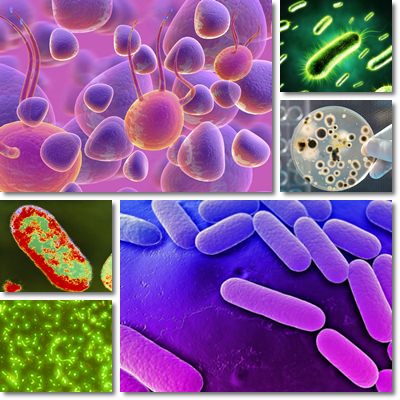Lymphocytes and macrophages are two types of white blood cells which serve various roles in our immune system. Lymphocytes are present in great numbers throughout the lymph and the lymphatic system and in smaller numbers in our blood.
They serve a variety of purposes such as antibody makers, helper cells or killer cells. They are produced in the red bone marrow of certain bones and mature in organs such as the thymus and spleen. Reserves of lymphocytes are found in the lymph nodes, tonsils, adenoids, spleen, appendix and gastrointestinal tract.
Macrophages digest everything that does not bear the mark of a healthy cell such as cell debris, viruses or bacteria, malignant cells and all sorts of foreign matter. A subtype of macrophage cells promotes regeneration processes and supports wound healing. Unlike lymphocytes which travel in the lymph, most macrophages remain in fixed points in the body where they intercept potential pathogens.

What are white blood cells?
White blood cells comprise several types and subtypes of specialized cells involved in immunity. They are also called leucocytes (alternative spelling: leukocytes). Despite performing several different functions within our body, all types of white blood cells serve the following general purpose: protecting our body against disease, infection and any form of ill health caused by external pathogens such as bacteria, viruses, parasites or fungi.
- According to structure, white blood cells are divided into:
- Granulocytes (white blood cells with a lobed nucleus and granules in their cytoplasm).
- Agranulocytes (mononuclear leucocytes or white blood cells with one-lobed nucleus and no granules in their cytoplasm).
- White blood cells are further divided into 5 main types:
- Neutrophils.
- Eosinophils.
- Basophils.
- Lymphocytes (NK cells, helper T cells, cytotoxic T cells, B cells, gamma delta T cells).
- Monocytes (macrophages, foam cells and dendritic cells).

Lymphocytes
There are three main types of lymphocytes:
1) T cells
T cells are lymphocytes (a type of white blood cells) that are produced in the bone marrow but mature in the thymus and tonsils. There are two main types of T cells: T helper cells and cytotoxic T cells. Helper T cells release cytotoxins, while cytotoxic T cells destroy infected cells (cancer cells or cells infected with viruses or cells that are damaged in any way). T cells belong to the adaptive immune system, an immune system mechanism that does not involve the formation of antibodies. However, they require the help of macrophages to perform their immune role.
2) B cells
B cells are lymphocytes (a type of white blood cells) that are produced in the bone marrow. B cells belong to humoral immunity. They produce antibodies in response to viruses, bacteria and other threats to our immunity. B cells have special receptors along their cell membrane which allows them to bind to specific antigens (molecules that elicit an immune response) and produce an immune response to help protect the host from disease.
3) NK cells
NK or natural killer cells are lymphocytes that belong to our innate (or inborn) immune system response. These natural killer cells recognize infected cells and cancer cells from healthy cells and release cytotoxins to destroy them. Natural killer cells are quick to respond to infection (an estimated of 3 days) and also malignant cells. Like most white blood cells, NK cells have a large, one-lobed nucleus and little cytoplasm space with cytotoxic granules.
Macrophages
Macrophages are a subtype of monocytes (white blood cells) along with dendritic cells and foam cells. Macrophages basically eat anything that does not bear the mark of a healthy cell: damaged cells, debris, foreign matter, cells infected with viruses, parasites or bacteria and cancer cells. This process is called phagocytosis and belongs to both innate and adaptive immunity. While some macrophage digest every unhealthy cell, others repair damage within the body by repairing tissue. Macrophages may live up to several months.
Where are lymphocytes and macrophages made in the body?
Lymphocytes and macrophages, and all other types of white blood cells, are made in the interior of some of our bones, in an area called red bone marrow. They are produced by a special type of stem cell along with red blood cells and platelets. Some types of lymphocytes such as B cells travel to our lymph nodes and spleen to mature, while T cells mature in our thymus gland, a gland situated behind the sternum and in between our lungs.
Where are white blood cells such as lymphocytes and macrophages found?
White blood cells are found in greater numbers in the lymph and lymphatic system and in lymph nodes and other key-organs such as the spleen, tonsils and specialized tissues in the gastrointestinal and respiratory tracts.
They are found in smaller numbers in our blood. While some types of white blood cells migrate from the lymph to the blood and tissues, depending on where they are needed, other types of white blood cells become fixed in certain locations.
For example, some types of macrophages remain fixed in the liver (and are known as Kupffer cells), others in the skin and mucosas that are in direct contact with the outside such as our lungs, stomach or nose mucosas (and are known as Langerhans cells) and so on. Lymphocytes are present in our circulatory system in the blood, lymph and lymphoid organs such as the lymph nodes, spleen etc. The difference between the two is that lymphocytes are generally mobile, while some macrophages tend to hold a stable position.
What do lymphocytes and macrophages look like?
Like all white blood cells, lymphocytes and macrophages are characterized by the presence of a large nucleus (red blood cells and platelets which do not have one). Macrophages have a one-lobed nucleus and are thus called mononuclear. Lymphocytes such as T cells, B cells and NK cells are also mononuclear. Generally, lymphocytes and monocytes (macrophages included) have a large nucleus about the size of an erythrocyte (or red blood cell) and very little cytoplasm.
Foods for better immunity
What can we do to help our immune system better do its job? The immune system relies heavily on essential nutrients such as protein, vitamins and minerals to function optimally. However, other nutrients from foods can be just as important in boosting immunity such as antioxidants.
Vitamin C rich foods
Vitamin C is the ultimate nutrient boasting not only potent regenerative and wound-healing properties, but also an excellent antibacterial, antiviral and anticancer action. Kiwifruit, red bell pepper, strawberries, papaya are only a few great alternatives to increase our vitamin C intake. Nonetheless, supplementation is needed if we want to increase our intake up to 2,000 mg a day, which is now the upper limit.
Vitamin A rich foods
Most leafy green vegetables (spinach, kale, collard greens, mustard greens, turnip greens, beet greens, chard) and orange fruits and vegetables in general (sweet potato, carrots and squash in particular) are excellent sources. Vitamin A is required for maintaining healthy mucous membranes at the level of the nose, throat, lungs and digestive tract. These areas are directly exposed to the outside world and pathogens may breach unless they are as healthy as can be.
Garlic
While not anyone can eat it as they please, garlic has been found to possess wonderful antimicrobial and antiviral properties and some studies suggests it even exhibits a significant antibiotic action when consumed regularly in the diet.
Dried fruits and nuts and seeds
Sun-dried fruits are excellent choices because they concentrate high amounts of many important nutrients such as vitamins and dietary minerals.
This makes them a wonderful choice for anyone looking to stay healthy and enjoy benefits for skin, eyesight, cardiovascular health and immunity.
Nuts and seeds are even healthier than dried fruits because they provide high amounts of protein which is used to make antibodies, components of the immune system that are the most active within the immune system response.
Mushrooms
Because of their high content of selenium and beta-glucan, mushrooms hold the potential to activate some types of white blood cells and thus actively contribute to the immune system response and good immunity. Mushrooms, both cultivated and wild sourced options, are also natural sources of vitamin D which has scientifically proven immune system modulating effects.
Fresh salmon
We all know salmon is a sort of posh food, often consumed as a trend more than for health related purposes, but it’s actually healthier than most people realize.
This is because fresh salmon is rich in vitamin D as well as healthy Omega-3 fatty acids. Vitamin D has been found to contribute to good immunity and even provide anticancer protection, while Omega-3 fatty acids are a source of benefits for both physical and mental health.
Herbal infusions
According to research at Harvard University, theanine in tea may help strengthen the immune system and contribute to better health as a result. Green tea is a great choice in this respect, but there are many tea options to choose from, all with important benefits for health, including for the immune system.
Plain yogurt
Simple yogurt or plain yogurt, better known as Greek yogurt, remains a healthy food option for all of us. Yogurt helps maintain gut health by both feeding and actively contributing to good gut bacteria populations and the health of the gut environment.
Via its prebiotic and probiotic properties, yogurt actively contributes to the health of the gut environment which has deep implications for health in general, from mental health to the immune system response.
A healthy gut environment is essential for the proper absorption of nutrients such as essential vitamins and minerals, but also amino acids from protein needed to make antibodies.
At the same time, a healthy gut environment implies the associated health of immune system tissues in the gut, further supporting the immune system function. Yogurt is also a natural source of high quality protein and protein is needed to make antibodies for the immune system, among other benefits. A just as good alternative to plain yogurt is Kefir or milk kefir.
Dark chocolate
While great amounts may overexcite one and cause sleepless nights or agitation, dark chocolate has also been found to improve immunity by enhancing T helper cells action.
Read more about the health effects and benefits of cocoa beans.
Zinc
While we can get all the zinc we need from food sources such as seafood, barley, peanuts and other nuts and seeds, or eggs, at times, our body needs higher amounts of the mineral to keep up with everything. In this case we either have to up our intake of zinc-rich foods or opt for some quality dietary supplements to help meet our daily needs of zinc which is essential for immune system health.
